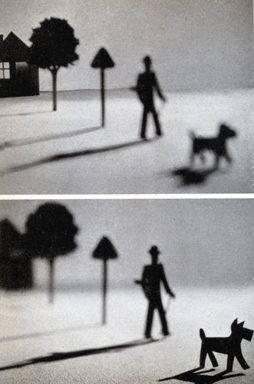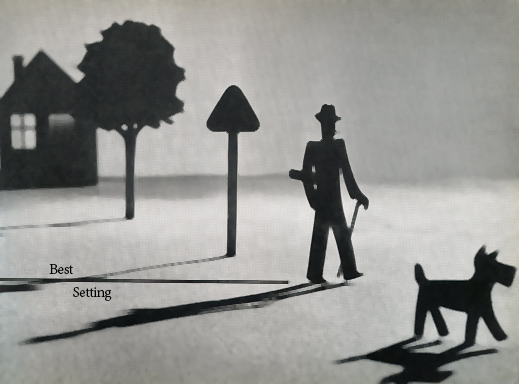The late models of the Leica
M camera line are often criticized for not offering autofocusing. It is certainly correct that a line of
autofocus lenses would eliminate any of those criticisms. But is the lack of autofocus really such a
hindrance?
With the advent of autofocus
one little trick to speed up focusing of our cameras has all but been
forgotten. I am talking about
hyperfocal lens settings with the help
of a depth of field scale. Most lenses
available today no longer have depth of field scales and thus make focusing via
hyperfocal settings impossible.
Fortunately, most Leica lenses till offer this advantage and its
application can overcome the lack of autofocus to quite an extend.
A lens can only be accurately
focused at one certain distance.
Everything before and after that point of focus is effectively out of
focus. Yet we all know that the pictures
we take show scenes and subjects to be sharply in focus over a considerable
distance. Are our books of physics
wrong? Not at all. The reason for this apparent contradiction is
our eyes. Fortunately they aren't good
enough to recognize out of focus areas in our pictures unless they reach a
certain level.
Imagine photographing a small
point. When not properly in focus, this
point will become larger and show up as a fuzzy disc. This disc has to be of a certain size before
our eyes recognize it as out of focus.
This representation of a point is referred to as the circle of confusion.
In these days of virtually
everything being auto focus we rarely pay any attention to focusing
anymore. As a matter of fact, many
outsiders consider the Leica M rangefinder cameras with their manually focusing
lenses an anachronism. Yet in quite a
variety of situations these lenses can be focused as fast or faster than any
auto focus system.
That is because the vast
majority of the Leica M lenses are non-zoom lenses. That is the reason why to this day all of
them have a depth of field scale. Many
photographers and picture takers have no idea what a depth of field
scale is, and if they do, they rarely know what to with one.
It is a known fact that the
aperture setting on our lenses, the f-stop used to take a picture, determines
how much of what we photograph will be in focus, how much depth of field there
will be. The smaller the aperture, the
more depth of field. That is what a
depth of field scale is all about. It
will show the distance from the point closest to the camera to the point furthest
from the camera that will be in focus.

Increase of depth of field by
decreasing aperture size
Effectively one third of the
total depth of field will be in front of the point of focus and two thirds will
be beyond it. If applied correctly, this
can actually greatly improve the sharpness of our photographs. Imagine taking a picture of a mountain
scene. The mountains are obviously far
enough away to constitute infinity as far as the focus settings on our lenses
are concerned. Subsequently it seems to
make sense to set our lenses to infinity to make sure the mountains are in
focus. As a matter of fact, if we use
the rangefinder on a Leica, this is exactly what will happen.
However, let’s remember the
above rule which states that two third of the depth of field is beyond the
point of focus. That means in our
mountain scene, two thirds of the depth of field will be wasted. The depth of field scale will help to prevent
that, if properly applied.
Our exposure settings will
always be a combination of shutter speed and aperture. Once we or the camera determine the correct
exposure settings, we will know what aperture the picture will be taken
with. Back to our mountain scene. Instead of setting the infinity mark opposite
the focus mark on the lens, all that needs to be done is to set the infinity
mark opposite the marking of the aperture we are using. That will still give proper focus to
infinity, but it will greatly increase sharpness in the areas closer to the
camera as indicated by the other aperture mark on the depth of field scale.

Above focused on the
background
Below focused on the
foreground

Focused at hyperfocal setting
with one third in focus in front of the point of focusand two thirds behind the
point of focus
Picture examples form "Kleines
Leica Buch (Little Leica Book), 1952 edition
In this example, the boy
flying his kite is obviously the main subject and therefore
should be in focus. However, focusing on him
would most likely render the
background out of focus. Utilizing the depth of field scale assured
that all is in focus.
It is a fact that the smaller
the aperture, the more depth of field we will have. But we shouldn’t indiscriminately use the
smallest aperture all the time, because this can easily lead to the necessity
of too slow a shutter speed which in turn can lead to blurry pictures because
of camera movement.
As I explained above, the
circle of confusion determines what detail in our pictures appears in focus and
which not. Unfortunately, the size of
the circle of confusion must also be based on a certain picture size. In most cases that is an approximate
enlargement of five times or a 5 x 7 inch enlargement from a 35mm negative or
full frame digital sensor. With other
words, up to a 5 x 7 inch size enlargement our pictures will display maximum
sharpness and maximum depth of field.
But what about enlargement
greater than a 5 x 7 or if considerable cropping is necessary? Does that mean the depth of field scale on
our lenses is useless? Not at all. All we need to do is use the depth of field
settings on the lens with an aperture one or two stops smaller than the aperture
in actual use. With enlargements of 8 x
10 or 11 x 14, the next larger aperture will usually be sufficient. If the enlargement size is greater than that,
use a two stop larger aperture.
Why do all of this instead of
just using the rangefinder and focus on our main subject? Because you can greatly increase your speed
of operating the camera. Using the depth
of field scale and setting the lens as explained above, this is called
hyperfocal setting, will eliminate the need to focus altogether and thus make
the operational speed of your camera that much greater.
The above figures are based
on 35mm size negatives or so called full frame digital sensors. Larger or smaller negative and sensor sizes
will lead to different depth of field.
Different focal lengths of our lenses will do the same. In general, the shorter the focal length the
more depth of field there will be. This,
however, is nothing to worry about because the depth of field scales will
reflect that.
Give it a try. You might very well find that your pictures
in some cases will display a greater range of sharpness and you will be able to
use your camera a lot quicker. It might
very well be the difference of being able to catch a great moment on film or memory
card instead of losing it to your camera being too slow.
------------------------------------------------------------------------------------------------------------------------------------------
DON'T FORGET TO SEND IN YOUR ENTRIES
LEICA Barnack Berek Blog PHOTOGRAPHY CONTEST

For more information click here
-----------------------------------------------------------------------------------------------------------------------------------------------------------------------------------------------------------------

-----------------------------------------------------------------------------------------------------------------------------------------------------------------------------------------------------------------
Current Specials:
-----------------------------------------------------------------------------------------------------------------------------------------------------------------------------------------------------------------








